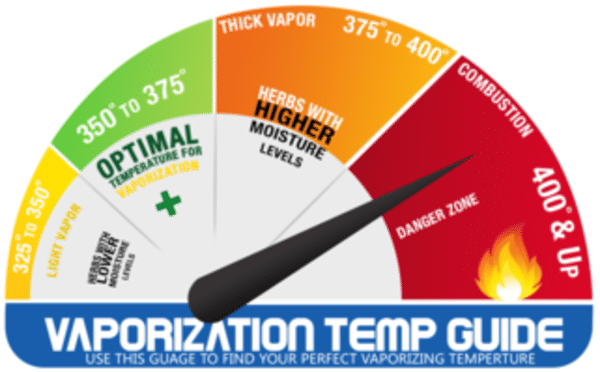
The Vape Pen
Choosing a vape pen may be the most difficult part of finding the perfect vaporizer for yourself. The most common selection of vaporizer pens consist of devices that are mostly compatible with concentrates. But, even when you know you’ve narrowed it down to concentrates, you must decide whether you want the oil vaporizer that uses wicks or the wax and thick oil vaporizer that uses coils. Some of you may want a vape pen for eLiquids which would use wicks just like the THC oil and CBD oil vaporizer. If however you are looking for a dry herb vaporizer, this is where it gets tricky as majority of pen style devices cannot hold a large amount of herb, nor can they efficiently vaporize dry herbal material. Only a handful of this style of vapes will work well with dry herbs.
What type of heating methods do vape pens use?
Most vape pens use the conduction heating method. This method generally uses a higher temperature, therefore it is better for oil/eliquid or waxes and other solid concentrates. This heating method allows the material regardless of its consistency to be placed directly onto the coil which will allow it to vaporize instantly when the coil is activated. The other method of heating is convection. However, this is extremely rare for vaporizer pens due to the size option of a vape shaped this way. There has been success with the Atmos Jump and the Atmos Boss when using dry material. We would suggest a portable or desktop unit for vaping dry herbal material due to chamber sizes and full temperature controls. When heating dry herbs, we urge you to have a vaporizer that has full temperature controls as some herbs with a higher moisture level will require higher temps while lower temps are great for herbs less dry.
What type of coils and heating chambers are there?
For solid concentrates, most coils will either use a ceramic rod, a quartz rod or the same materials in the shape of a donut (AKA Donut Coil). Diluted oil and eliquid vaporizers will often use cotton wicks in their tanks. For dry herbs, two very popular style of heating chambers will provide a full vaporization effect. The most popular is the “convection style” conduction vaporizer. The reason we say this is because air is heating the herbs, usually at a specified temperature on the vape. Although, at this time there is still a hot plate touching the herb, so some may still consider this to be a conduction heating method even though the herbs are vaporized and not burned if the temperature is set accordingly to the moisture level of dry herb used. The rare but pure vaporizing chamber is the full convection chamber. This will lift the herbs on a screen, away from any hot surface to vaporize all pieces of the dry herbal blend equally.
What are the best suggested options?

As for dry herb vaporizers, we would suggest a device using the convection heating method with full temperature controls. With that said, for the best vaporizer experience you should invest into a desktop vaporizer such as the Vapir Rise, Volcano, Herbalizer, Da Buddha, Arizer, or Silver Surfer. We urge you to stay away from low end cheaper priced desktop units as they will be disappointing.
For waxes and solid concentrates, we recommend vape pens using the quartz coil and devices with a glass mouthpiece. We have received lots of positive feedback VS other quality devices when this type of material is used. Eliquids seem to have the best quality flavor when vaporized by devices using Japanese cotton. We hope we have helped you choose the right type of vaporizer!






